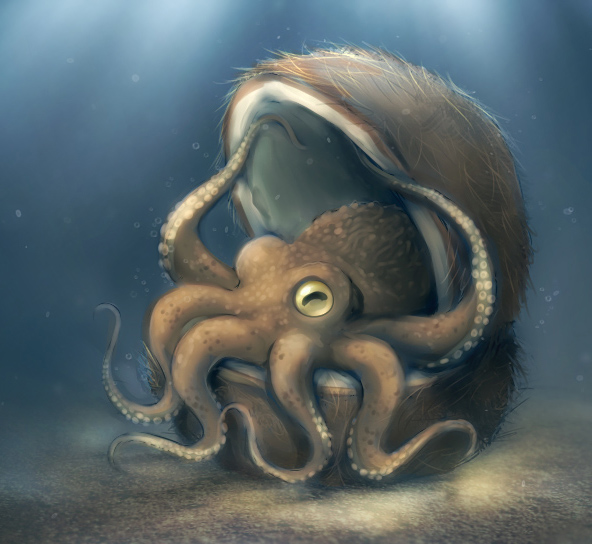o hai octopi | tool use in cephalopods
Bio 342 Fall 2011
Chloe Waterman
Eugene Lee
Emily Fee
Adaptive Value
Tool use is most notable in Amphioctopus marginatus, or the veined octopus, which uses a behavioral trick called stilt walking in order to carry coconuts that it has found, dug out of the sea floor, and cleared out the sand. Despite the awkwardness of this movement, the coconuts collected via this behavior prove to be a useful tool for predator defense. If the octopus senses any possibility of danger while travelling, it can simply hide itself inside the coconut shell and wait until the danger passes [5]. Think of it as the octopus’s portable coconut armor!
Coconut carrying is yet another adaptive strategy for the octopus to add to its arsenal of predator defense mechanisms. The octopus’ primary defense is to avoid being seen, achieved by burrowing into substrate or through use of camouflage [9]. If this fails, the next line of defense involves quick escape, which could involve defense mechanisms such as inking or jet propulsion.
Since the octopus’s soft body is relatively vulnerable, a predator can make an easy meal out of the veined octopus if it is caught off guard or these defenses fail. By stilt walking, however, the octopus greatly increase their chance of survival against predators by obtaining and making use of the hard-shelled and mobile coconut shells which provide reliable defense, acting both as a hiding place and defensive armor against enemies.

Source: http://kikariz.deviantart.com/art/Coconut-Octopus-181815655